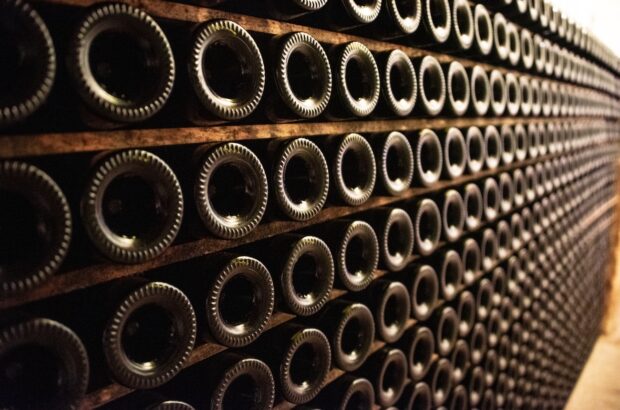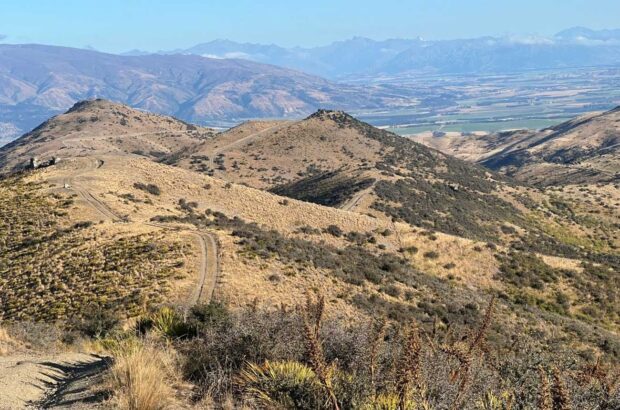Cool-climate, boutique vineyards, diverse terroirs and elegant wines – are we really in Australia, asks Andrew Catchpole
In Mansfield, snowboarders collect their gear from opposite the Ski Inn Hotel before heading to the snow-clad slopes. That’s Mansfield, Australia, not Mansfield, Nottinghamshire, in case you’re wondering. And it’s July.
The breath-chilling air in this coolest part of mainland Australia is striking, but perhaps shouldn’t come as such a surprise given that it’s mid-winter and Mansfield is on the edge of ski territory, in the southern state of Victoria’s High Country, where the annual snow cover whitens a larger area than Switzerland’s winter fall.
The fact that you can in fit some mid-season skiing while visiting Victoria’s wine-producing regions is a reminder that not all of Australia is baking red dirt forever sweltering under a relentless sun. Of course the vineyards get ample helpings of grape-ripening summer sun.
But this compact state, which boasts 21 of Australia’s 63 regional GIs (geographic indicators), has more than its fair share of cool-climate vineyards, sandwiched as it is between the maritime influences of the cold Southern Ocean and the hills of the Great Dividing Range.
Moreover, most of its wineries are small, quality-focused affairs, with an average production of less than 3,000 cases a year. It’s this combination of boutique mentality, coupled with an incredible array of micro-climates and soils, that makes Victoria such fertile hunting ground for exciting wines that are at once pure and Australian yet somehow European in style. The perfect antidote, then, to all the doom, gloom and dreary discounting at the mass-market end of Australia.
Ongoing discovery
Within an hour or two of Melbourne, the state capital, you can find restrained, Chablis-like Chardonnays, perfumed Pinot Noirs, minerally, savoury Rhône-like Syrahs and seamless red Bordeaux blends.
Elegant sparkling wines, too, leave a lasting impression, while varieties such as Arneis, Nebbiolo, Sangiovese, Primitivo, Viognier, Semillon, Tempranillo and Riesling are also finding footholds. Add in the sensational fortified wines that still reign in the traditional area of Rutherglen and Victoria is easily Australia’s most diverse and, to me, exciting wine region.
The word terroir, coyly avoided until recently by so many of Australia’s winemaking fraternity, has been taken up with gusto by Victoria’s winemakers as their pioneering pays dividends. Even in the Yarra Valley, where vineyards were established as long ago as 1850, there is still a sense of ongoing discovery.
The benchmarks here in Victoria’s best known region are elegant Pinots, Chardonnays and sparkling wines from producers such as Mount Mary, De Bortoli, Mac Forbes, Tarrawarra, Yering Station, Coldstream Hills and Yarra Yering.
The wines show an intensity and mineral verve that speaks volumes about local climate and soils. Shiraz, too, often tellingly labelled as Syrah, has a distinct aromatic, savoury quality, leaning more to the northern Rhône than some of the blockbuster Shirazes from Barossa and McLaren Vale in neighbouring South Australia.
Nonetheless, these generalisations are still too broad a brush stroke for many, including Mac Forbes, who recently produced a map designating seven Yarra sub-regions. ‘These are clearly up for debate,’ says Forbes, ‘but without putting the idea out there, the discussion might not take place.’
A tasting of his top Pinots, each from single vineyards in these sub-regions, revealed differences in terroir as distinct as anywhere in Burgundy. ‘The French have had thousands of years to understand their vineyards but we are still at the beginning,’ he says.
Forbes is no lone idealist. Steve Webber of De Bortoli makes a Pinot Noir called Riorret (terroir spelled backwards) – a tongue-in-cheek riposte to those who doubt that vineyards Down Under can mirror the complexity of the Old World.
Webber agrees that the best is yet to come as winemakers further understand their vineyards and soils, and argues that even in established regions such as Yarra, it’s too early to curb the pioneering with the kind of restrictions that tie down Europe’s finest wine regions to a few varieties or styles.
Webber, though, won’t hesitate to pull up vines that aren’t showing their best regardless of variety, and on some warmer, less Pinot-friendly north-facing slopes, he has Nebbiolo, Sangiovese and is contemplating Tempranillo, a variety ‘that likes a bit of a bask in the sun’.
Old World style
This lack of rules, the chance to create great wines without any restrictions other than those placed by the soil and climate, has brought in an influx of foreign blood. Rhône vigneron Michel Chapoutier is the highest-profile, now with three winemaking projects: Domaine Terlato & Chapoutier in the Pyrenees; Jasper Hill, a joint venture with Ron Laughton in Heathcote; and Giaconda in Beechworth, in sight of the Victorian Alps.
All are very different, from the Rhône-style savoury Pyrenees Syrahs to the chocolately, dark fruit-intense Heathcote wines, each resonating with a sense of the vineyard site. ‘I decided on Australia because it has a long history with Syrah,’ Chapoutier says. ‘I am a soil lover and Australia has the oldest soils in the world.’ He describes the diversity in Victoria as ‘amazing, like a second France’.
Giaconda gives an excellent example of how diverse Victoria’s offerings can be, even within one winery. Well-established for its accomplished Burgundian-leaning Chardonnays, yet straddling New and Old World in style with the joint-venture inky, intense Syrahs, it also has a brooding, botti-aged, bitter-sweet young Nebbiolo.
But how can Chardonnay, Shiraz and Nebbiolo live happily side by side? The answer is that they don’t. Rather, different sites and neighbouring aspects, each with their own micro-climate and soils, have been exploited to best show off the attributes of what the winemaker thinks is the best-suited vine.
There is still so much to discover in Victoria. Beechworth, along with Heathcote, Grampians and the Pyrenees, are hot-name cooler-climate sub-regions, each with developing styles of their own. At Jasper Hill in Heathcote, Laughton talks passionately about what drew him here – namely a combination of ancient, iron-rich Cambrian soils and an elevated, continental climate at the tail of the Great Dividing Range.
Heathcote is proving its mettle with perfumed, dense, mineral-laced, ageworthy Shirazes from phylloxera-free vines, such as Georgia’s Paddock. Jasper Hill also makes an outstanding Grenache, while Cabernet Franc finds its way into the enveloping, chocolatey Emily’s Paddock Shiraz, hinting at other varieties that can work well.
Variety show
Other examples of fine winemaking outposts abound. Nearby Shelmerdine, which straddles the same early Cambrian Heathcote soils, is producing memorable Pinot Noir, Shiraz and delectable Viognier, while Mount Langi Ghiran, tucked away in the Grampians, champions Shiraz while turning out sublime Riesling and a very respectable Sangiovese in the same hills.
Wherever you turn in a state that’s the size of the UK, someone, somewhere is making incredible, individual, terroir-focused wine. From Lethbridge, where Indian neuroscientist-turned-winemaker Ray Nadeson is showing Geelong’s great potential, to the ‘young punks’ of Yarra – a group of talented, if off-piste, winemakers including Timo Mayer, Gary Mills, William Downie and Luke Lambert – exploration and experimentation continue apace across the state.
Victoria is crammed with youthful regions, but a sense of identity can develop incredibly quickly when winemakers are given free rein to express themselves. The Mornington Peninsula is a shining example of how, in a few short decades, a strip of land has transformed itself into a Pinot Noir- and Chardonnay-producing force to be reckoned with. With maritime influences on both sides, wineries such as Kooyong, Ten Minutes by Tractor, Stonier and Yabby Lake are delivering supple, sensational Pinots and finely textured Chardonnays showing a purity and intensity of fruit.
Such is the excitement about the quality of Pinot emerging from the Peninsula that Keith Mugford of Moss Wood in Western Australia has been drawn here. He’s so impressed with the quality that he’s considering phasing out Moss Wood’s own homegrown Pinot to concentrate on the Mornington wine.
Here too, though, the fine-tuning and tweaking goes on in search of ever better, more expressive wines. Single-estate offerings are being pared down to single-vineyard, and even single-block, wines. Again, the sense of terroir is palpable in bottles such as Kooyong winemaker Sandro Mosele’s Ferrous Pinot Noir or the distinct styles of the Wallis, McCutcheon and Judd vineyard Pinots that Martin Spedding presides over via his Ten Minutes By Tractor label.
Victoria’s diversity is a palate-tingling recipe. It is perhaps no coincidence that Melbourne, with its blend of grand European and modern New World architecture, famously changeable
climate and globally recognised gastronomic pedigree, lies at the heart of this exciting winemaking state.
And, as Australia attempts to mature beyond its now tarnished ‘sunshine in a bottle’ tag, there’s no doubt that Victoria’s cool-climate, fine wine image will come ever more to the fore. There’s never been a better time to dive in and explore it.
Written by Andrew Catchpole






